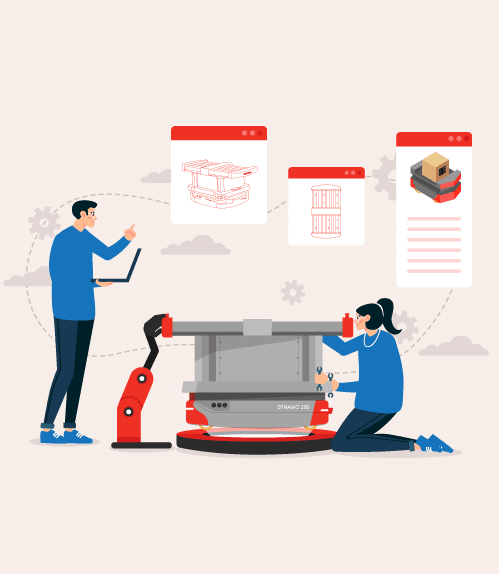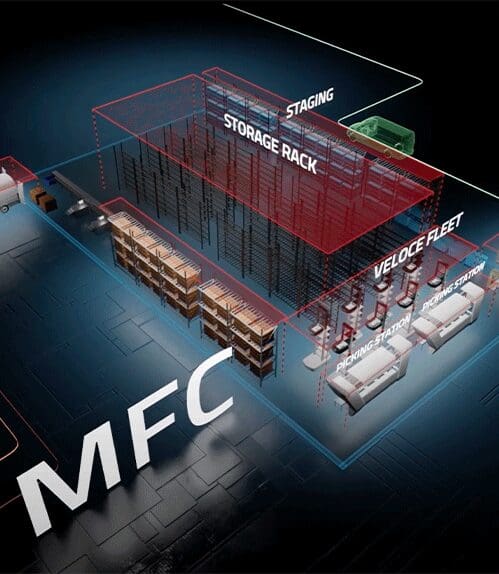Much like the advent of the web revolution in the 1990s, in the twenty-first century E-Commerce has fundamentally altered the way goods are sold and delivered to customers across the globe. This change in paradigm from offline to online has forced supply chains to become more flexible and agile and has created highly complex problems being faced in warehouses and distributions centers. Eventually, all e-commerce companies have realised the final frontier will be conquered in the warehouses. E-commerce Inventory Management Automation strategy will prove to be a major game-changer in the way warehouses operate, as it helps in smooth operations, provides future scalability and accommodates flexibility. Companies that understand automation, shift early and navigate it with aplomb, will be the ones left standing when the dust settles. Advances in automation, robotics, artificial intelligence and machine learning will transform the way fulfilment is carried on. Ecommerce is a goliath industry and hence its automation strategy is not only knowing when to automate but also where to automate and how much to automate. While answering these questions, it is important to look at the workflow to identify processes that are labour intensive and pick the sweet spots that will deliver the best value for investment. Automation – for automation’s sake is not the right approach. Let us look at some functions within an e-commerce business that can leapfrog efficiency with automation.
1. Inventory Management
Inventory management is closely tied to a company’s financials. In any ecommerce warehouse, correct control over inventory is crucial because of the large number of SKUs being handled. Accurate inventory will give you a birds-eye view of the amount of revenue potential from every single storage location. Also, with effective automated inventory tracking, you can ensure that at no point in time you are understocked or overstocked, thus reducing operational costs and ensuring higher efficiency.2. Seasonal Demand & Sortation
E-commerce companies are prone to demand fluctuations based on seasonality as they cater to a wide range of products. E-commerce Automation solutions help them predict the demand patterns and also allows the warehousing operations to scale up and scale down almost immediately which is not possible in a manual system. Also, with mobile robots and sorting robots, the process of sorting the deliveries becomes much easier and cost-efficient.
3. Returns Handling
An important element that is a given in any ecommerce business is handling the returns. This calls for highly automated tracking, restocking, storing and retrieval activities all rolled into one. Efficient software solutions must be deployed for data integration across all sub-tasks that should ultimately result in enhanced customer experience and satisfaction.
4. Picking
One of the biggest benefits while using an e-commerce platform is that you can order 1 item or 100 items from a wide range of available products. This flexibility increases customer retention on one hand but makes the process of collecting these items in a warehouse, which is called Order Picking, highly complex. Automation offers tremendous productivity gains in order picking operations by eliminating the non-value added activities like walking and searching for items and increases the accuracy of picking operations through advanced software. Goods-To-Person Automated systems can provide a throughput of 1200 picks per hour, which is a 1000% increase over manual systems.
5. Scaling
One of the problems that ecommerce players often face is that the warehouse capacity becomes full by the time it becomes operational, such is the increase in demand that we are witnessing. Automation allows you to use the height of the warehouse with solutions like Pallet ASRS, Mini-Load systems and carton shuttle systems. This changes the paradigm by giving more space to expand in the same warehouse and any player can easily scale up in an existing warehouse by utilising the height rather than looking for new warehouses for different scale of operations.
Customers’ behaviour in response to technologies and faster embrace of new ways of engaging with ecommerce companies will profoundly influence companies to not just be price centric but also be velocity centric (How fast can you deliver). A winning strategy with the right mix of automation, which helps in reducing the operational cost and increasing product velocity should be able to firmly help e-commerce companies to deliver immense customer satisfaction and business value.








